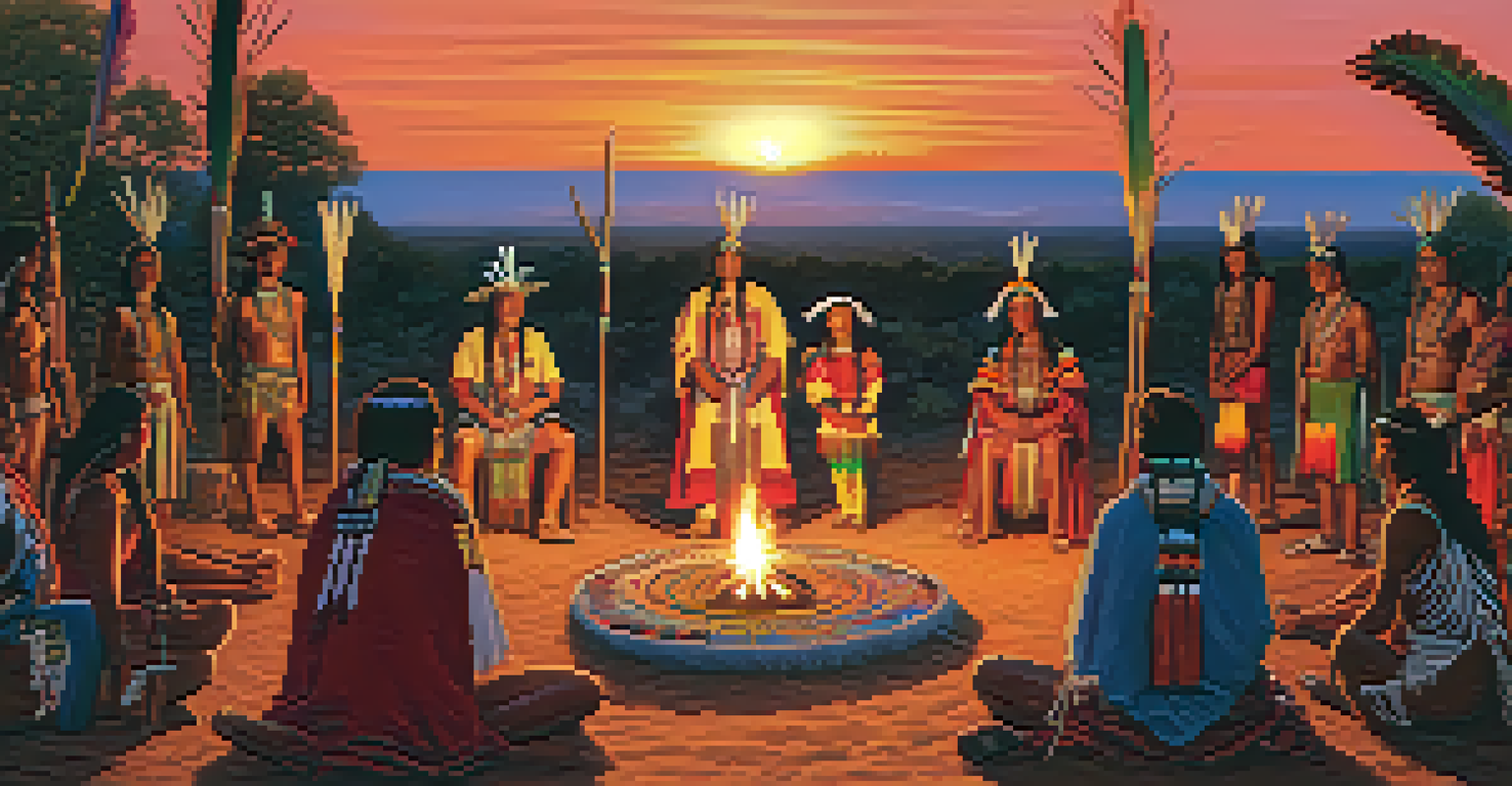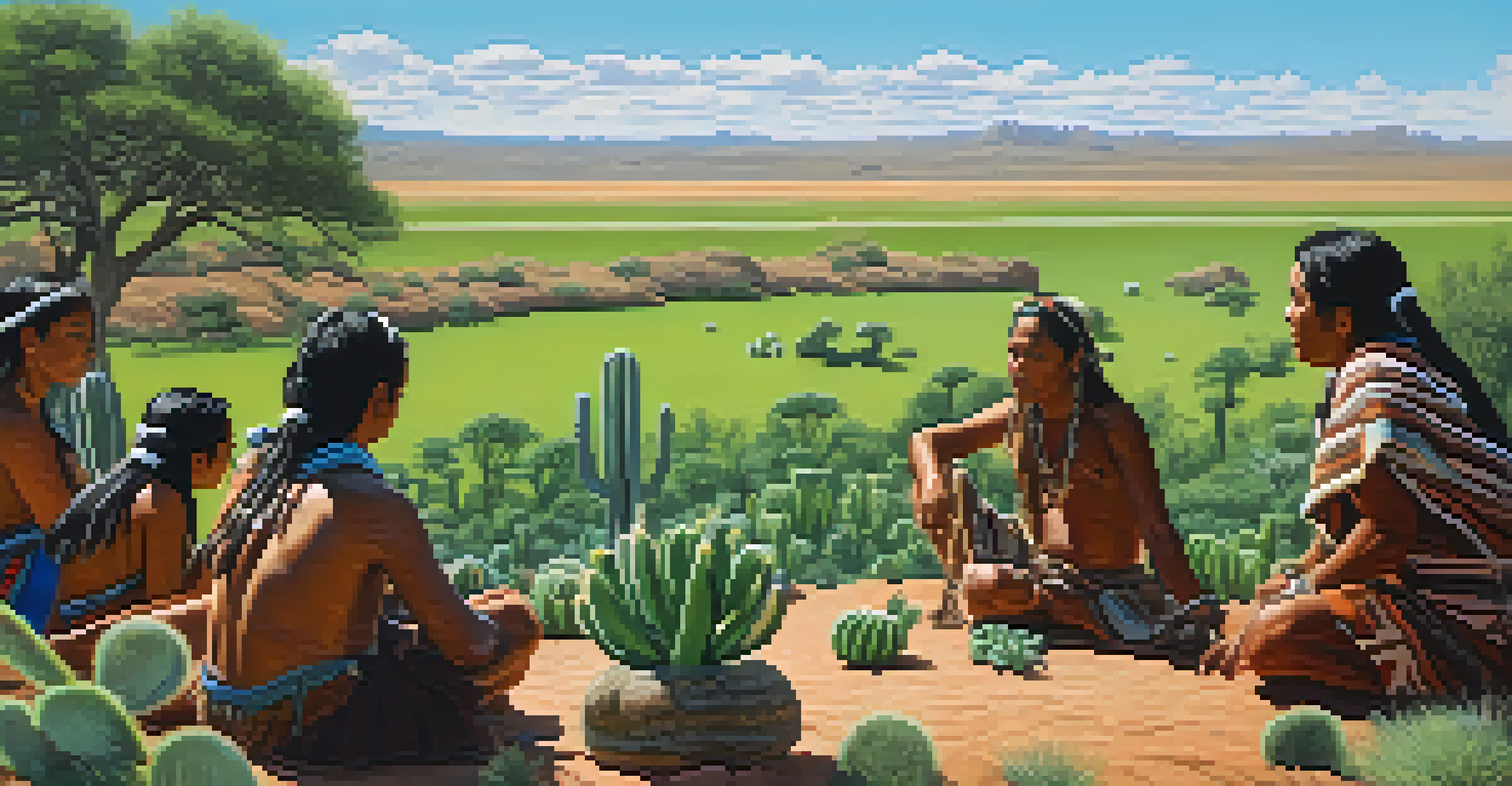Legal Battles Over Peyote and Indigenous Rights

Understanding Peyote and Its Cultural Significance
Peyote is a small cactus that has been used for thousands of years by Indigenous peoples in North America for religious and medicinal purposes. It contains mescaline, a psychoactive compound that induces altered states of consciousness. For many tribes, peyote is not just a plant; it’s a sacred entity central to their spiritual practices.
Peyote is not just a plant; it’s a sacred entity central to their spiritual practices.
The cultural significance of peyote cannot be overstated. It’s often used in ceremonies that promote healing, community bonding, and spiritual enlightenment. Indigenous people view peyote as a gift from the Creator, and its use is deeply rooted in their identity and traditions.
However, this sacred practice has faced challenges, especially as modern legal systems often clash with Indigenous beliefs. Understanding these cultural dimensions is crucial for grasping the legal battles that ensue over peyote rights.
Historical Context of Peyote Legislation
Peyote’s legal status has evolved significantly over the years, particularly in the United States. In the early 20th century, as interest in hallucinogens grew, peyote was subjected to restrictions that many Indigenous groups found unjust. The 1970 Controlled Substances Act classified peyote as a Schedule I substance, making it illegal outside of certain contexts.

Indigenous groups fought back, arguing for their right to use peyote in religious ceremonies. This led to the establishment of the American Indian Religious Freedom Act (AIRFA) in 1978, which aimed to protect the religious practices of Native Americans, including peyote use.
Peyote's Cultural Significance
Peyote is a sacred cactus used by Indigenous peoples for spiritual practices, representing a deep cultural identity.
Despite this progress, legal battles continued, highlighting the ongoing tension between federal laws and Indigenous rights. The historical context sets the stage for understanding the complexities of current legal disputes.
Key Legal Cases Involving Peyote Use
Several landmark cases have shaped the legal landscape surrounding peyote and Indigenous rights. One notable case is Employment Division v. Smith (1990), where two Native American workers were denied unemployment benefits after failing a drug test for peyote. The Supreme Court ruled against them, arguing that the state had the right to enforce its drug laws.
Cultural appropriation not only disrespects the origins of peyote use but can also dilute the spiritual practices of Indigenous peoples.
This decision sparked outrage among Indigenous communities, as it essentially undermined their religious freedoms. It led to further advocacy for stronger protections and ultimately contributed to the passage of the Religious Freedom Restoration Act (RFRA) in 1993.
Such cases illustrate the ongoing struggle for Indigenous peoples to assert their rights while navigating the complexities of U.S. law, revealing a legal system that often fails to recognize their cultural practices.
Current Legal Landscape and Challenges
Today, the legal landscape surrounding peyote use remains complex. While some protections exist for Indigenous practitioners, many states have varying laws regarding peyote possession and use. This patchwork of regulations can create confusion and challenges for tribes seeking to practice their traditions.
Moreover, as interest in psychedelics grows in broader society, Indigenous groups are concerned about cultural appropriation and the commodification of peyote. There are fears that commercial interests may overshadow Indigenous rights and practices, further complicating the legal landscape.
Legal Challenges for Indigenous Rights
Ongoing legal battles highlight the tension between federal laws and Indigenous rights regarding peyote use.
Navigating these challenges requires a careful balance between respecting Indigenous traditions and adapting to modern legal frameworks. Ongoing advocacy and dialogue are essential for ensuring that Indigenous rights are upheld.
The Role of Indigenous Advocacy Groups
Indigenous advocacy groups play a crucial role in the fight for peyote rights. Organizations like the Native American Church work tirelessly to protect the legal use of peyote in spiritual practices and educate the public about its cultural significance. These groups often engage in lobbying efforts to influence legislation and promote awareness.
They also serve as a platform for Indigenous voices, ensuring that their perspectives are heard in legal discussions and policymaking. This advocacy is essential, particularly as the legal landscape evolves and new challenges arise regarding peyote use.
Through grassroots movements and legal challenges, these organizations strive to preserve the sacred traditions surrounding peyote, highlighting the importance of Indigenous rights in contemporary society.
Cultural Appropriation and Its Implications
As interest in psychedelics grows, concerns about cultural appropriation have surfaced. Non-Indigenous people exploring peyote for recreational or therapeutic use often overlook its deep cultural significance to Indigenous communities. This can lead to a disconnect that undermines the very traditions that these practices stem from.
Cultural appropriation not only disrespects the origins of peyote use but can also dilute the spiritual practices of Indigenous peoples. It raises ethical questions about who has the right to access and utilize sacred plants and the implications for Indigenous identities.
Cultural Appropriation Concerns
The growing interest in psychedelics raises issues of cultural appropriation, threatening the integrity of Indigenous traditions.
Addressing cultural appropriation requires education and awareness, emphasizing the importance of respecting Indigenous practices and acknowledging their rights. The conversation about peyote is not just legal; it's also deeply rooted in cultural respect and understanding.
Future Directions for Peyote and Indigenous Rights
Looking ahead, the future of peyote rights and Indigenous practices hinges on ongoing dialogue and legal advocacy. As more people recognize the cultural importance of peyote, there is potential for greater support for Indigenous sovereignty. This could lead to more inclusive policies that respect traditional practices.
In addition, as legalization movements for various substances gain traction, there may be opportunities to carve out specific protections for Indigenous peoples. This could help ensure that their rights and traditions are preserved amidst broader societal changes.

Ultimately, the future will require collaboration between Indigenous communities, lawmakers, and the public to protect the sacred traditions surrounding peyote while fostering a respectful understanding of its cultural significance.